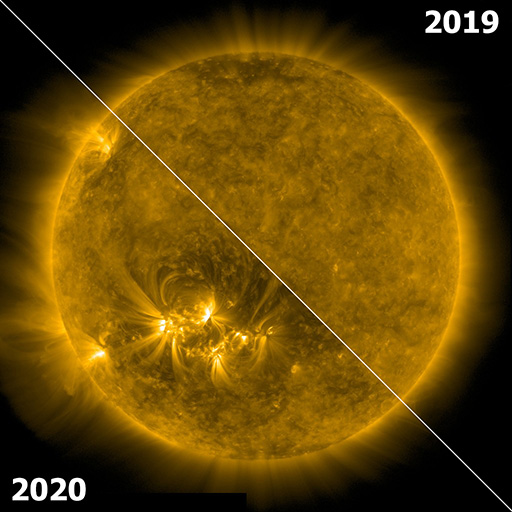M4.44 solar flare
Sunday, 29 November 2020 17:49 UTC

Solar activity reached moderate levels today as an M4.44 solar flare (R1-minor) peaked at 13:11 UTC. The solar flare took place at S23E98 as seen from Earth which means the event originated 8 degrees behind the south-east limb. We can conclude that the X-ray flux likely reached more than M4.4. This is the second M-class solar flare of the current solar cycle and the strongest solar flare of this cycle thus far.
It became quickly apparent that this long duration solar flare would be eruptive. A huge amount of coronal dimming was observed along with a Type II Radio Emission which are two excellent signs that a coronal mass ejection was launched during the event.
Today's M4.4 solar flare came from a sunspot region behind the south-east limb. We see a huge amount of coronal dimming and a large coronal mass ejection became visible on STEREO A. The eruption is however aimed away from Earth keep that in mind. Welcome Solar Cycle 25! pic.twitter.com/9oGkbrtH0X
— SpaceWeatherLive (@_SpaceWeather_) November 29, 2020
Another look at the coronal mass ejection launched by the M4.4 flare earlier today. These images come from SOHO which is a space craft that looks at CMEs from earth's point of view. A fast and impressive CME can be seen but as mentioned earlier, it is not directed towards Earth. pic.twitter.com/mVvOGebuon
— SpaceWeatherLive (@_SpaceWeather_) November 29, 2020
Indeed, a large and fast coronal mass ejection became visible on both the coronagraph imagery from SOHO and STEREO A. The velocity of this coronal mass ejection is estimated to be around 1.400km/s which is fast. Due to the location of the eruption, the plasma cloud is aimed away from Earth and an impact at our planet should not be expected.
Our Sun was in a deep slumber back in November 2019 but this month we have seen a really remarkable uptick in solar activity considering solar minimum was less than 1 year ago. What does this mean for the coming years? Nobody knows... but we can't wait to find out!

Thank you for reading this article! Did you have any trouble with the technical terms used in this article? Our help section is the place to be where you can find in-depth articles, a FAQ and a list with common abbreviations. Still puzzled? Just post on our forum where we will help you the best we can!
Latest news
Latest forum messages
More topicsSupport SpaceWeatherLive.com!
A lot of people come to SpaceWeatherLive to follow the Sun's activity or if there is aurora to be seen, but with more traffic comes higher server costs. Consider a donation if you enjoy SpaceWeatherLive so we can keep the website online!

Space weather facts
| Last X-flare | 2024/12/08 | X2.2 |
| Last M-flare | 2024/12/26 | M3.0 |
| Last geomagnetic storm | 2024/12/17 | Kp5+ (G1) |
| Spotless days | |
|---|---|
| Last spotless day | 2022/06/08 |
| Monthly mean Sunspot Number | |
|---|---|
| November 2024 | 152.5 -13.9 |
| December 2024 | 115.2 -37.3 |
| Last 30 days | 118.5 -39.1 |


